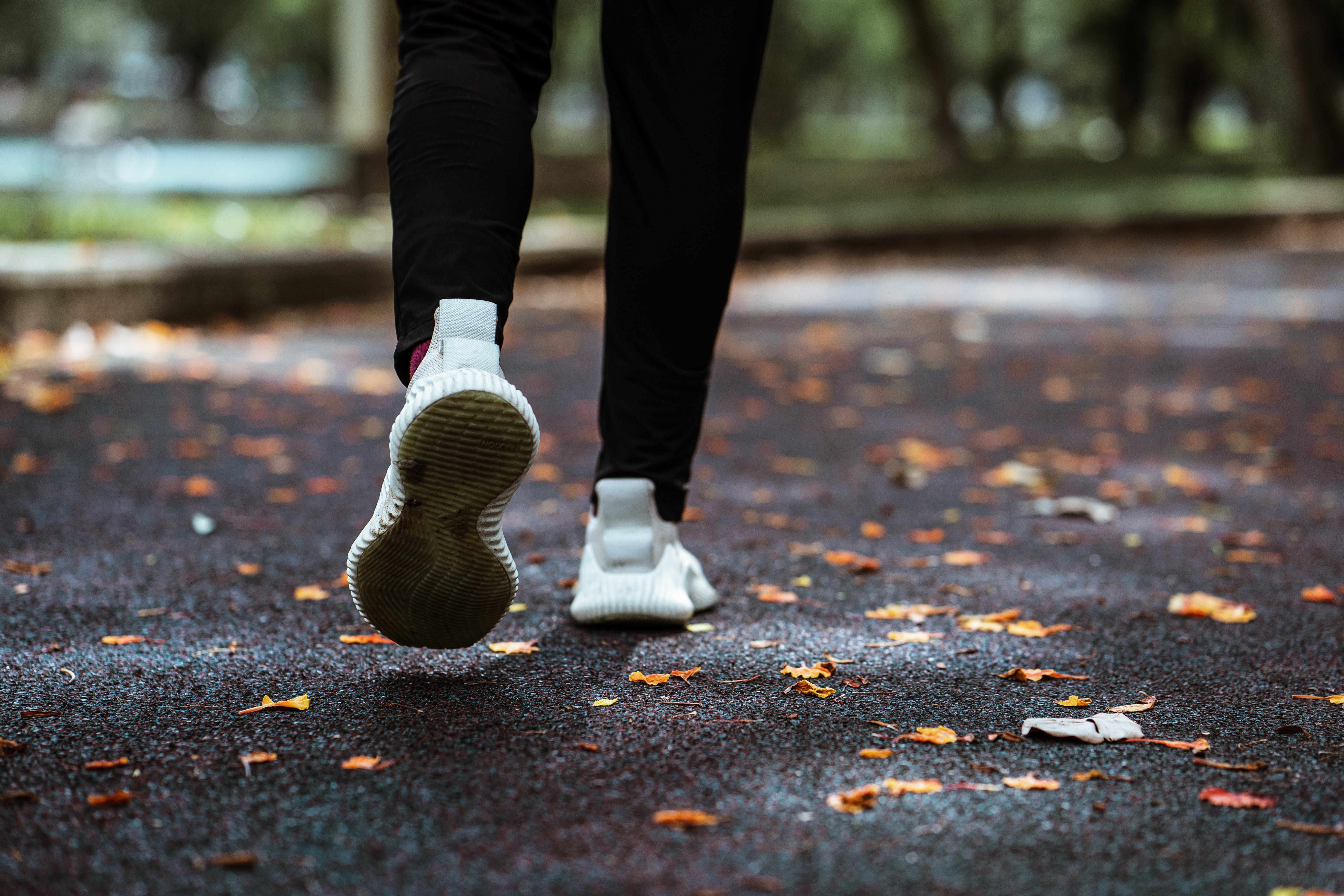Welcome to a journey of strength and endurance where we unveil the power of core strength for runners. Why should you do core exercises? As a runner, your core is the epicenter of your power, the command center for your limbs, and the foundation for your balance. It’s not just about having a toned midsection; it’s about building a powerhouse that can drive you forward, keep you upright, and sustain you mile after mile.
Core exercises are the unsung heroes of a runner’s workout routine. They do more than just sculpt your muscles; they lay the groundwork for every stride you take. A strong core reduces the strain on your legs by providing better support for your spinal column and pelvis. This means you’re less likely to succumb to the fatigue that often comes from long-distance running. Moreover, a fortified core can help prevent injuries that could sideline you, ensuring that you stay on track with your fitness goals.
Whether you’re sprinting in a 100-meter dash or pacing yourself in a marathon, your core muscles play a pivotal role in your speed, stability, and stamina. By incorporating core exercises into your training, you’re not just preparing your body for the next run; you’re revolutionizing the way you move.
Ready to embrace the full spectrum of benefits that core exercises offer? Visit our website to learn more and get started today! Click here.
Core Stability: The Runner’s Secret for Better Balance

Mastering the art of balance is a secret weapon every runner should wield, and it all begins with core stability. Why should you do core exercises to enhance balance? The answer lies in the dynamic nature of running, which requires the body to maintain equilibrium with each impactful step. Core stability is the linchpin that holds your form together as you navigate uneven terrains, sharp turns, and the varied demands of speed.
Engaging your core is not just about brute strength; it’s about creating a synergy between muscle control and coordination. When your core muscles are well-trained, they act as a stabilizing force, counteracting the jarring movements that can throw a runner off course. This intrinsic stabilization goes beyond the visible muscles, such as the rectus abdominis, and taps into the deeper muscles like the transverse abdominis and the multifidus.
By focusing on exercises that promote core stability, runners can enjoy a smoother gait and enhanced proprioception. This heightened body awareness allows for quick adjustments during runs, which is crucial for avoiding missteps and injuries. With a stable core, you can run with a confidence that comes from knowing your body is supported and ready to respond to every challenge the path ahead may present.
Remember, a runner’s balance is not just a physical state; it’s a performance enhancer that can be the difference between a good run and a great one. It’s time to make core stability a cornerstone of your training and unlock your full potential on the track or trail.
The Impact of Core Exercises on Running Posture and Performance

Delving deeper into the why should you do core exercises, we uncover their profound impact on running posture and performance. A strong core is the foundation upon which runners build their stride. It’s the powerhouse that aligns the spine, pelvis, and shoulders, reducing the likelihood of slumping and ensuring an upright posture that maximizes efficiency.
As runners, maintaining an optimal posture is essential for breathing effectively and conserving energy. Core exercises train the muscles to sustain this alignment even as fatigue sets in during longer runs. This means that with a strong core, you’re less likely to experience the energy-sapping effects of poor form, allowing you to maintain a consistent pace and utilize your energy reserves intelligently.
Performance-wise, the benefits are clear. A stable core enhances biomechanical efficiency by allowing for a more powerful leg drive and better arm swing, which are critical components of running economy. Moreover, when your midsection is solid, each stride can be executed with greater precision, reducing the energy lost through excess movement.
Enhanced posture and performance from core exercises don’t just improve your times; they also lower the risk of injury. By maintaining proper alignment, the stress on joints and muscles is distributed more evenly, which can alleviate common running-related ailments like IT band syndrome or runner’s knee. Thus, core training is not merely an addition to your workout routine—it’s an investment in your running career’s longevity and success.
Reduce Injury Risk Through Targeted Core Workouts

Injury prevention is paramount for runners, and targeted core workouts are a key player in this arena. The reason why should you do core exercises transcends performance; it’s also about safeguarding your body. By fortifying the core muscles—encompassing the abdominals, obliques, lower back, and hips—you create a supportive corset around your midsection. This muscular ‘shield’ effectively absorbs the impact that otherwise reverberates through the bones and joints with each step.
Consider the repetitive nature of running; the continuous impact can be detrimental over time if the body isn’t properly conditioned. Core workouts counteract this by enhancing muscular endurance, allowing runners to maintain proper form longer, which is crucial in avoiding overuse injuries. A misaligned pelvis or a weak lower back can quickly lead to compensations elsewhere in the kinematic chain, often resulting in injuries such as shin splints, hamstring strains, or even lower-back pain.
Moreover, a study published in the Journal of Strength and Conditioning Research found that athletes with stronger core muscles had a lower risk of injury. This is because a robust core enhances the body’s ability to handle sudden shifts in direction or terrain—a common scenario for trail runners and those who encounter uneven surfaces. Core stability exercises, such as planks, bridges, and rotational movements, can dramatically improve your body’s response to these unpredictable elements.
Ultimately, incorporating core exercises into your routine is not just about achieving a personal best; it’s about fostering a resilient body that’s less prone to injuries, ensuring that you can continue to run and enjoy the freedom of fitness for years to come.
Core Conditioning: Boosting Your Endurance and Speed

Core conditioning goes beyond mere aesthetics; it is integral for runners looking to boost both their endurance and speed. A strong core stabilizes the torso, allowing for more efficient energy transfer between the upper and lower body. This translates to a smoother, more powerful stride and the ability to maintain pace for extended periods. As a runner, the question of why should you do core exercises is answered by the performance enhancements experienced with a conditioned midsection.
During long runs or races, a well-conditioned core helps to combat fatigue. When the core muscles are weak, form begins to falter, leading to inefficient movement patterns that consume more energy. This inefficiency not only slows you down but also increases the time to exhaustion. By strengthening the core, you can delay the onset of fatigue, which is invaluable during the latter stages of a race or a long-distance run.
Speed is another beneficiary of core conditioning. The explosive power required for quick sprints or hill climbs originates from a solid core base. These muscles act as the epicenter of force generation. Workouts that focus on dynamic core movements, such as medicine ball throws or kettlebell swings, can enhance this explosive power, thereby increasing your sprinting capabilities and improving overall running speed.
Ultimately, the benefits of core training extend well into the realms of increased endurance and speed. By incorporating core exercises into your regular training regimen, you not only build a more resilient physique but also unlock the potential for faster, longer, and more effective runs, solidifying core conditioning as a cornerstone of a comprehensive running program.
Incorporating Core Training into Your Running Routine
Integrating core exercises into your running routine isn’t just beneficial; it’s necessary for a well-rounded fitness regimen. But how do you harmonize core training with your runs? It’s simpler than you might think. Begin with dedicating a portion of your workout schedule to core-specific exercises. This can be done after a short run, or on a separate day dedicated to strength training. Exercises like planks, Russian twists, and bicycle crunches can be done with minimal equipment and yield significant results.
For runners, it’s crucial to focus on functional movements that mimic the dynamics of running. Incorporating stability exercises, such as single-leg deadlifts or stability ball workouts, can improve your balance and mimic the unilateral nature of running. This helps to prevent injuries and strengthens the muscles that are engaged during a run.
Don’t forget to vary your core workouts to target all muscle groups, including the obliques, lower back, and the deeper core muscles. This approach ensures a comprehensive strengthening of the core, which supports improved running performance. Aim to include core training two to three times a week for optimal results. And remember, consistency is key to seeing improvements on the track or trail.
To get started with a tailored core workout that complements your running, visit our website and join our vibrant community. Whether you’re a seasoned marathoner or a weekend jogger, core training is a non-negotiable part of your fitness journey. Embrace the joy of running and the strength of your core with us. Click here to learn more and begin your journey towards fitness freedom!


